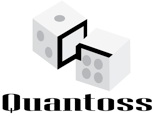QRNG

Random numbers play a crucial role in the areas ranging from computer simulations, on-line gambling, to secure communications (see wikipedia for more applications of randomness). While computer generated pseudo-random numbers can be used for many applications, they remain fundamentally non-random and thus experience various secure problems (see random number attacks and recent news from Computerworld and New York Times about this issue). To generate true randomness, a few classical processes have been used. However, classical physics is essentially deterministic in nature, which cannot generate unpredictable random numbers (see hardware RNG for more discussions). If classical methods cannot provide an optimal way, quantum physics or more precisely, quantum random number generator (QRNG) would constitute the only solution.
A QRNG can generate true randomness by exploiting the fundamental indeterminism of quantum mechanics. In the past decade, several QRNGs including commercial products have been demonstrated. Unfortunately, due to the difficulties of measuring quantum effects in real set-up, most approaches to QRNG are limited to low speed and high cost.
The Quantoss is a breakthrough technology that generates real-time quantum random numbers based on the quantum phase noise of spontaneous-emission photons. This compact prototype offers a substantially high speed over Gbits/s, which is faster than any previous solutions available on the market. The system design is simple, cost-effective, and robust against external perturbations. To improve the randomness quality, Quantoss implements a post-processing algorithm based on the rigorous method of randomness extractor. A key advantage of this approach is that its output randomness is information-theoretically provable. The random numbers from Quantoss have successfully passed all the statistic tests available today.
An improved prototype QRNG is currently being developed by us. For further information about the underlying technology, please refer to the scientific publications: B. Qi, et al. Opt. Letters, 35, 312-314, (2010); F. Xu, et al. Opt. Express, 20, 12366-12377, (2012). The technology is Patent pending.
Random number samples can be obtained by contacting us at: info.quantoss@gmail.com
Quantoss | 10 King’s College Rd., M5S3G4, Toronto | Canada | info.quantoss@gmail.com
